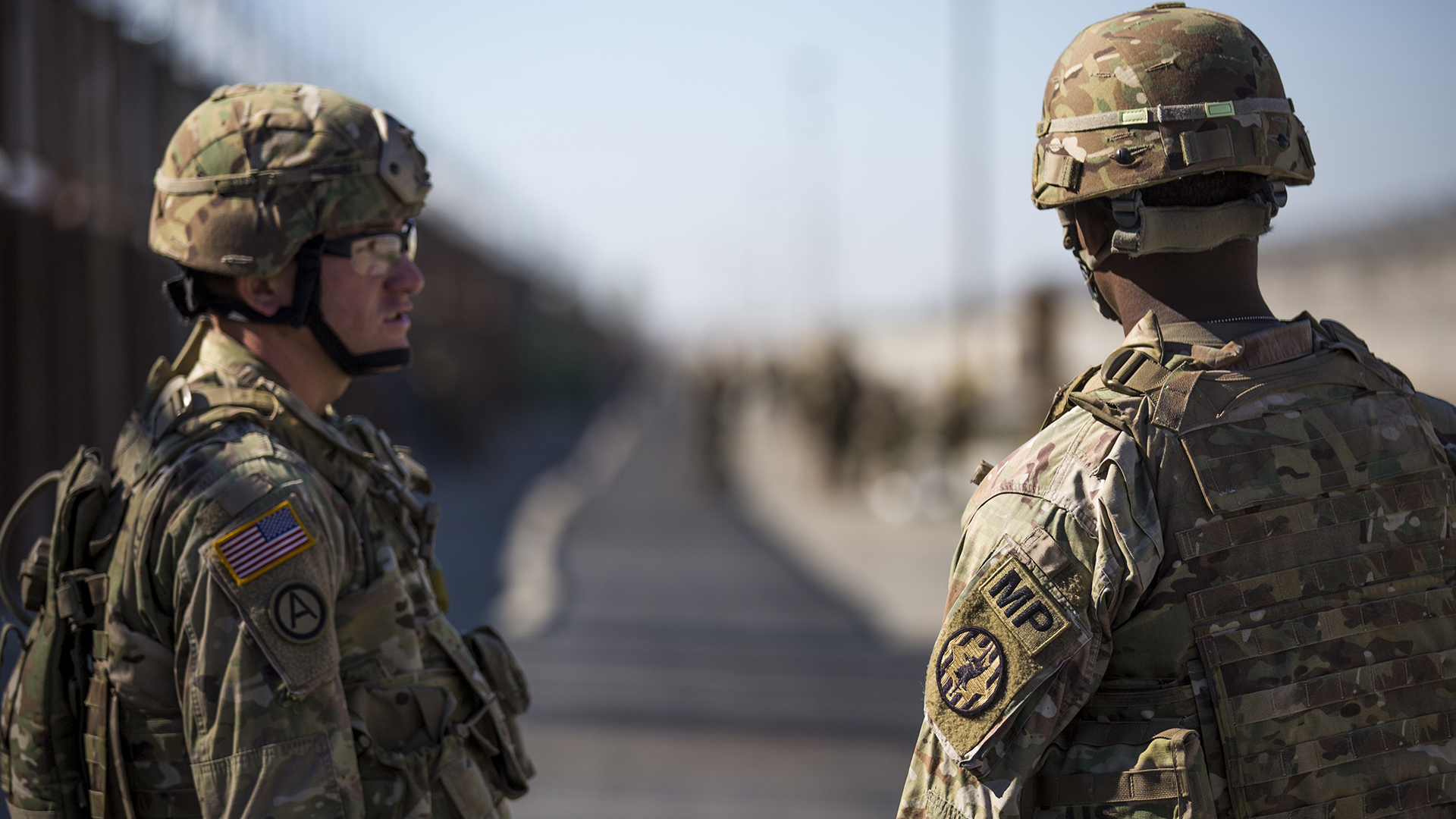

The Pentagon is sending approximately 1,500 active-duty troops to the U.S.-Mexico border as immigration restrictions are set to expire on May 11.
Defense Secretary Lloyd Austin has approved a request from the Department of Homeland Security for the troops to augment U.S. Customs and Border Protection officials on the southern border, Air Force Brig. Gen. Patrick Ryder, a Pentagon spokesman, said on Tuesday.
“For 90 days, these 1,500 military personnel will fill critical capability gaps, such as ground-based detection and monitoring, data entry, and warehouse support, until CBP [U.S. Customs and Border Protection] can address these needs through contracted support,” Ryder said in a statement. “Military personnel will not directly participate in law enforcement activities. This deployment to the border is consistent with other forms of military support to DHS [Department of Homeland Security] over many years.”
Subscribe to Task & Purpose Today. Get the latest military news, entertainment, and gear in your inbox daily.

The troops will come from the Army and Marine Corps. The first active-duty service members are expected to begin arriving at the border on May 10, Ryder told reporters on Tuesday.
The Pentagon is looking at possibly replacing these active-duty troops with National Guardsmen and Reserve service members or contractors, Ryder said during a Pentagon news briefing.
The Department of Homeland Security requested additional support from the military ahead of the expected surge of migrants at the border starting on May 11, when immigration restrictions are set to expire, Ryder said.
Under former President Donald Trump, the U.S. government used a rule known as Title 42 to prevent asylum seekers from entering the United States without adjudicating their claims. The policy was ostensibly intended to stop the spread of the novel coronavirus (COVID-19).

“It was designed to deal with the pandemic, but it’s used as a means to expel people at the border,” Biden told reporters during a Jan. 5 White House news briefing.
Now that Title 42 is expected to end on May 11, U.S. cities along the southern border are bracing for a surge in migrants trying to enter the United States to request asylum.
One reason why the troops come from the active-duty force is that it takes time to mobilize service members from the National Guard and Reserves, Ryder said.
“Really, this is about being responsive,” Ryder said. “[The Department of Homeland Security] has asked us for this support. And so, the ability to rapidly provide support from our active-duty forces is really the key here.”

Roughly 2,500 National Guardsmen are currently deployed to the border, where they are helping Customs and Border Protection officials by providing “detection and monitoring and aviation support,” Ryder said.
The U.S. military has deployed troops to the southern border for decades in attempts to stem illegal immigration. Former President Bill Clinton sent Marines to the border as part of Operation Gatekeeper, during which one Marine shot and killed an 18-year-old goat herder whom he mistakenly thought was shooting at Marines.
Then-President George W. Bush ordered 6,000 National Guard troops to deploy to the U.S.-Mexico border in 2006 under Operation Jump Start. Former President Barack Obama later deployed about 1,200 National Guardsmen to the southern border in 2010 as part of Operation Phalanx, and Trump sent thousands of National Guardsmen and active-duty service members to the border starting in 2018 to help border patrol officials prevent asylum seekers from Central America from crossing into the United States.
The latest on Task & Purpose
- USS George HW Bush aircraft carrier rocks battle flag on return home from deployment
- Accused Air Force intel leaker Jack Teixeira’s bedroom is the most cringe thing we’ve ever seen
- The Navy wants to sell off its troubled littoral combat ships to allies after just a few years in service
- The beloved A-10 Warthog has a brand new role: bomb truck
- Army National Guard team wins this year’s International Sniper Competition